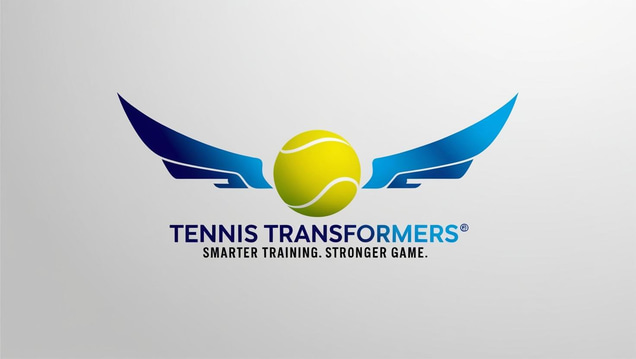Top 5 Books for Intermediate Tennis Players
Discover the five best books for intermediate tennis players designed to improve your game. Explore ten valuable takeaways to enhance your skills and performance on the court.
BOOKS & VIDEOS
2/28/20253 min read


Five of the best books for intermediate tennis players looking to improve their game, along with the ten most valuable takeaways from them.
Top 5 Books for Intermediate Tennis Players
1. “The Inner Game of Tennis” – W. Timothy Gallwey
A classic that focuses on the mental side of tennis, teaching players how to quiet their inner critic and play in the zone.
2. “Tennis Anatomy” – Paul Roetert & Mark Kovacs
A deep dive into biomechanics, strength, and conditioning to enhance performance and prevent injuries.
3. “Winning Ugly” – Brad Gilbert & Steve Jamison
A tactical guide that teaches how to outthink and outmanoeuvre opponents, even if they’re more skilled.
4. “Complete Conditioning for Tennis” – Mark Kovacs, Paul Roetert & Todd S. Ellenbecker
A fitness-focused book that provides exercises to develop speed, agility, endurance, and power.
5. “Essential Tennis: Improve Faster, Play Smarter, and Win More Matches” – Ian Westermann
A practical book covering technique, strategy, and mental toughness for competitive improvement.
Top 10 Learnings from These Books
1. Master the Mental Game (Gallwey, Gilbert, Westermann)
The biggest improvement often comes from training your mind. Gallwey emphasizes silencing self-doubt, trusting muscle memory, and playing in a flow state. Gilbert teaches how to stay calm, adapt strategies, and never mentally concede a match. Westermann reinforces staying mentally engaged and resilient during competition.
2. Tactics Beat Technique in Matches (Gilbert, Westermann)
Many intermediate players focus on technique but forget about strategy. Gilbert’s Winning Ugly shows how to identify an opponent’s weaknesses and exploit them. Westermann explains how smart shot selection, court positioning, and reading your opponent lead to more wins than just hitting clean shots.
3. Build Tennis-Specific Strength and Mobility (Kovacs, Roetert, Ellenbecker)
General fitness isn’t enough; tennis requires explosive power, endurance, and flexibility. Kovacs’ books focus on exercises that improve acceleration, balance, and injury prevention. Strengthening core and leg muscles, along with shoulder mobility work, significantly enhances performance and longevity.
4. Develop a Reliable Second Serve (Gilbert, Westermann, Kovacs)
A strong second serve prevents double faults and keeps opponents from attacking. Gilbert advises hitting a safe, high-percentage kick or slice serve. Kovacs highlights the importance of leg drive and core rotation for consistency. Westermann suggests practicing second serves under pressure to replicate match conditions.
5. Improve Court Positioning and Footwork (Kovacs, Westermann, Gilbert)
Many players lose points by being out of position rather than missing shots. Kovacs’ Tennis Anatomy explains how explosive lateral movement and split-step timing help cover the court. Gilbert stresses moving before the opponent hits, anticipating their shot. Westermann teaches how to position yourself optimally for offense and defense.
6. Play High-Percentage Tennis (Gilbert, Westermann, Gallwey)
Intermediate players often go for risky winners too early in a rally. Gilbert preaches patience—hitting deep, cross-court shots to control rallies. Gallwey advises trusting instincts rather than forcing aggressive shots. Westermann teaches how to balance aggression with consistency to construct points intelligently.
7. Train Smarter, Not Just Harder (Roetert, Kovacs, Westermann)
Many players mindlessly hit balls but don’t train for match situations. Kovacs and Roetert stress specific drills like point-based practice and interval sprints to replicate real match intensity. Westermann suggests recording your play to analyze weaknesses and track improvement.
8. Hydration and Nutrition Matter More Than You Think (Roetert, Kovacs)
Fatigue and cramping often come from poor hydration and nutrition. Kovacs emphasizes electrolyte balance and refueling between sets. Roetert explains how proper pre-match meals and hydration strategies sustain energy levels.
9. Don’t Just React—Anticipate (Gilbert, Gallwey, Westermann)
Instead of just running after the ball, anticipate where your opponent will hit. Gilbert teaches pattern recognition—knowing common responses based on shot selection. Gallwey highlights how staying relaxed improves instinctive reactions. Westermann breaks down how pros anticipate by reading body positioning and shot tendencies.
10. The Best Players Adapt Mid-Match (Gilbert, Westermann, Gallwey)
Sticking to a losing game plan is a mistake. Gilbert teaches how to adjust based on what’s working today, not just your usual strengths. Westermann encourages making tactical shifts—changing serve placements, mixing spins, and varying pace. Gallwey advises focusing on sensations rather than obsessing over mechanics to make adjustments in real-time.
Final Thoughts
Improvement at the intermediate level comes from refining not just strokes but mental approach, fitness, strategy, and preparation. These books provide a blueprint for developing into a smarter, fitter, and more adaptable player. Instead of just practicing harder, applying these lessons ensures real, lasting improvement.
©2025 Tennis Transformers. All rights reserved
Disclosure
This website contains affiliate links. If you purchase through these links I may earn a small commission at no extra cost to you. I only recommend products I believe add value to you. This helps support my work and allows me to continue providing valuable content. Thank you for your support!
